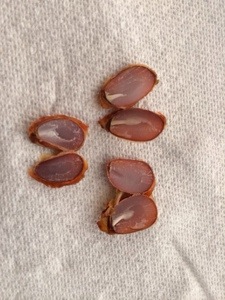Your cart is currently empty!
Tag: Persimmon Seeds
-

Folklore and Weather Forecasting
Do wooly worms, persimmon seeds, and black walnuts know the future? Here in the Northern Hemisphere, the U. S. Midwest, to be precise, we are entering the winter season. The topic on everyone’s mind seems to be what the winter weather will bring us. Before potential winter storms are upon us, we look to the…
-

Persimmon Seeds and Wooly Worms
Somewhere in history someone came up with the idea that the color of wooly worms in the fall indicates the type of winter that will follow. The darker the coat the colder the winter. A striped coat means a varied winter. Lighter colors mean snow. And who started this tradition of cutting persimmon seeds to…
